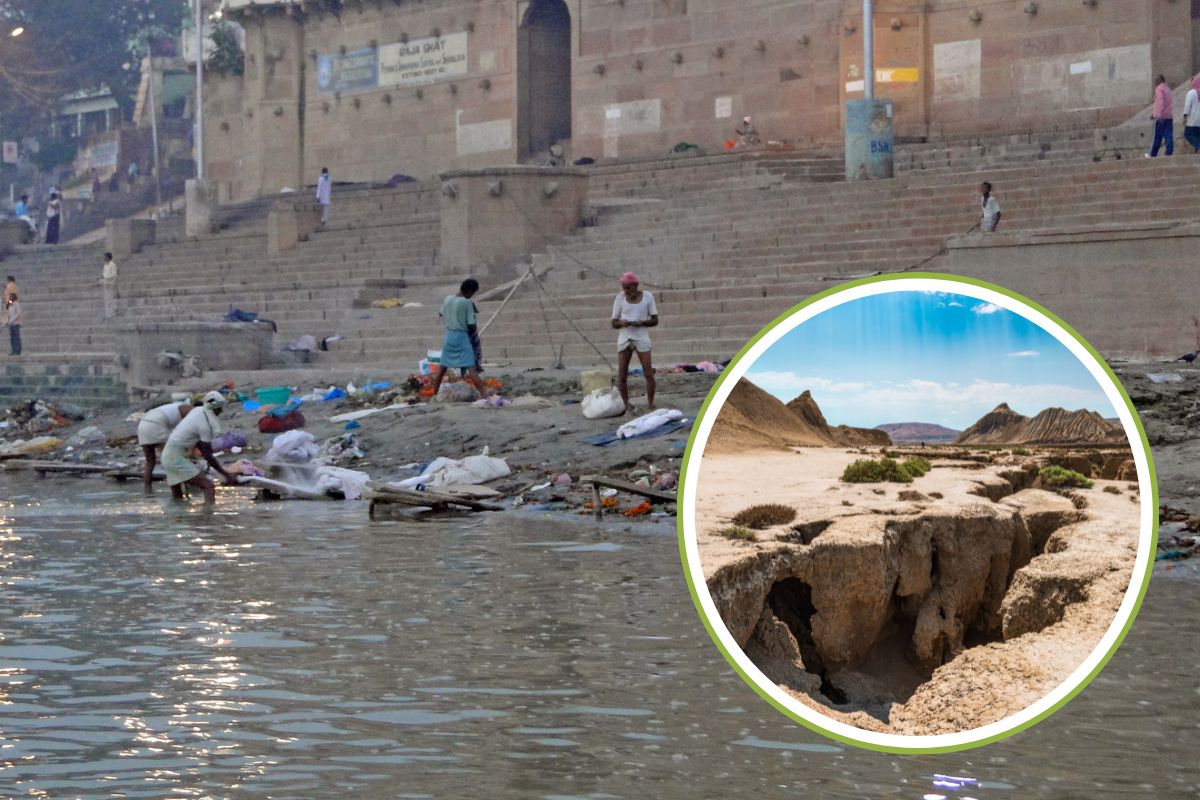New research shows that an earthquake 2,500 years ago diverted the Ganges, highlighting the current seismic risks for Bangladesh: this historic event raises crucial questions about the region's vulnerability to future large-magnitude earthquakes

Approximately 2,500 years ago, a powerful earthquake dramatically changed the course of the Ganges River, one of the world’s largest rivers. This event, previously undocumented, diverted the main channel of the river into what is now densely populated Bangladesh, a region still vulnerable to major earthquakes. The new study was published in the journal Nature Communications.
A major river course change
Scientists are aware of many river course changes caused by earthquakes, but according to Michael Steckler, a geophysicist at the Lamont-Doherty Earth Observatory, such a significant change had never been observed before:
“An event like this could have submerged anyone in the wrong place at the wrong time.”
Liz Chamberlain, a researcher at Wageningen University in the Netherlands, added:
“It had never been confirmed that earthquakes could cause avulsions in deltas, especially for a river as immense as the Ganges.”
The Ganges river system
The Ganges originates in the Himalayas and flows for about 1,600 miles (2,600 kilometers), joining other rivers like the Brahmaputra and the Meghna to form a vast river system that empties into the Bay of Bengal, covering Bangladesh and India. It is the second-largest river system in the world by discharge, after the Amazon.
Like other rivers in large deltas, the Ganges undergoes course changes without earthquakes. Sediments carried downstream accumulate in the channel, raising the riverbed until it breaks and begins a new path. This process occurs over years or decades. In contrast, an avulsion caused by an earthquake can happen almost instantly.
Discoveries of the new study
The study’s authors identified the old Ganges channel using satellite images, about 60 miles (100 kilometers) south of Dhaka, the capital of Bangladesh. This channel, about 1 mile (1.5 kilometers) wide, runs parallel to the current river for 60 miles (100 kilometers). Filled with mud, it frequently floods and is used for rice cultivation.
In 2018, Chamberlain and other researchers found a fresh excavation for a pond not yet filled with water. They observed vertical dikes of light-colored sand cutting through layers of mud, indicative of an earthquake. Shocks can pressurize buried sand layers, pushing them upward to form “sand volcanoes” about 1-1.3 feet (30-40 centimeters) wide and 10-13 feet (3-4 meters) high.
Further analyses showed that the sand volcanoes were created simultaneously and that the eruptions and the channel abandonment dated back to about 2,500 years ago. A similar site 53 miles (85 kilometers) downstream filled with mud around the same period. The authors conclude that this was a major avulsion caused by an earthquake with a magnitude of 7 or 8.
Potential sources of the earthquake
The earthquake could have originated from a subduction zone to the southeast, where an oceanic plate pushes under Bangladesh, Myanmar, and northeast India, or from large faults at the Himalayan foothills, rising from the collision of the Indian plate with Asia. A 2016 study by Steckler shows that these zones are accumulating stress and could generate earthquakes similar to the one 2,500 years ago. The last earthquake of this magnitude occurred in 1762, causing a tsunami that traveled up the river to Dhaka. Another may have occurred around 1140 CE.
The 2016 study estimates that a similar modern earthquake could affect 140 million people. Syed Humayun Akhter, rector of Bangladesh Open University and co-author of both studies, stated:
“Large earthquakes affect vast areas and can have long-term economic, social, and political impacts.”
Global implications
The Ganges is not the only river at risk. Other rivers in tectonically active deltas, such as the Yellow River in China, the Irrawaddy in Myanmar, and the Jordan River in the Middle East, face similar dangers.
Source: Columbia Climate School
